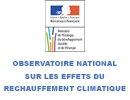Dendro-ecological indicators of the effects of environmental changes on the wood characteristics and growth of major forest species
Dendro-ecological indicators of the effects of environmental changes on the wood characteristics and growth of major forest species
A broad consensus exists today that the global environment is changing (an over 35 % increase in atmospheric concentration of CO2 since the beginning of the industrial era, climate, nitrogen deposits, soil, etc.) and that, in many situations, such environmental changes have already affected, or are affecting, the productivity or the processes of the vegetation cover and of forest stands in particular. It is highly likely that these environmental changes will continue over the next decades.
Faced with this situation, operational methods (such as simple environmental indicators, growth models) that could contribute to better understand and anticipate the effects of these changes on forest stands are cruelly lacking. Moreover, data on the effects of environmental changes on the characteristics of wood are extremely rare, in spite of potentially very important economic implications.
The objectives of this project are:
1) To develop dendro-ecological indicators based in particular on stable isotopic tools (?13C, ?18O, ?15N) and on dendrochemical analyses that would make it possible to identify the factors involved in the long-term responses of major forest species to environmental changes and, in these responses, to distinguish environmental effects from silviculture effects. In this approach, which we will first apply at the level of the individual tree, we will be careful to draw on existing experiments of nitrogen fertilization in adult stands.
2) To use these indicators to interpret the long-term trend patterns of tree growth and wood characteristics in typical lowland forest situations.
| Coordinators |
Jean-Marc Guehl , INRA |
| Partnership |
INRA – Centre de Nancy |
| Funding |
MEDD
|
| Budget |
48 783.69 € (including tax)
|




